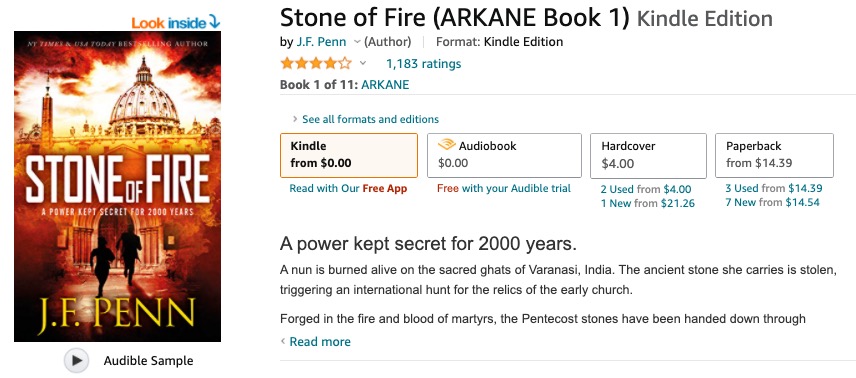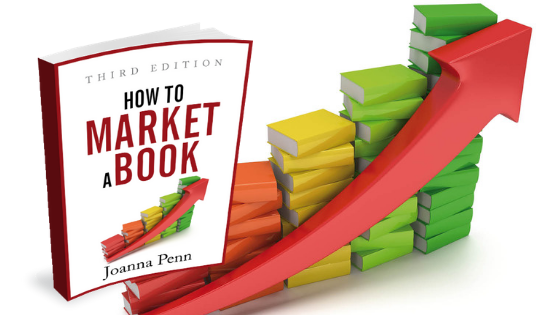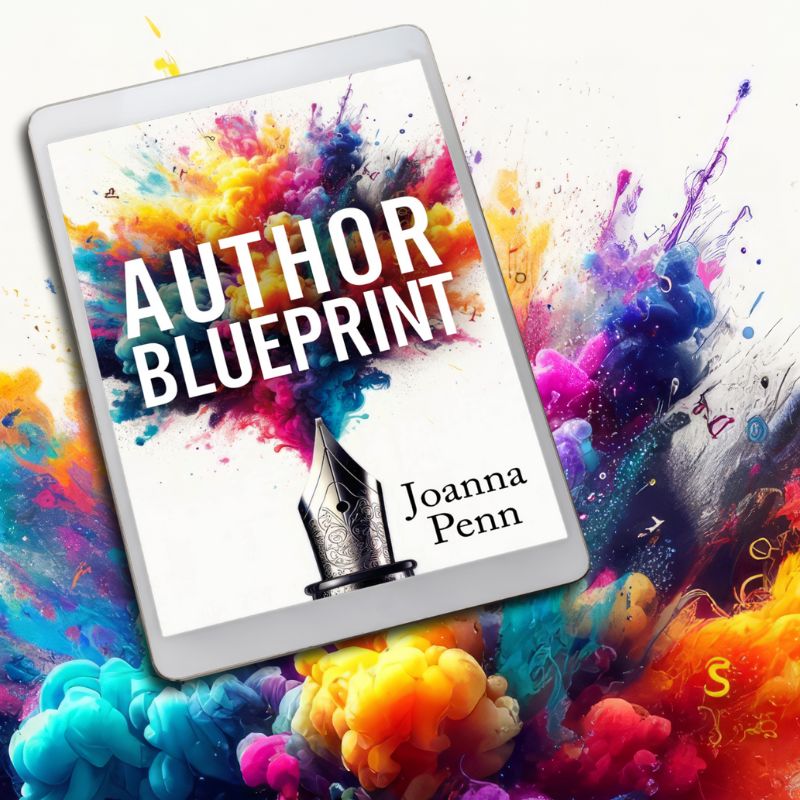“Customers care about price only when they have nothing else to care about.” Seth Godin
Pricing is most definitely a marketing tool, and if you self-publish, you have control over your book's price, and you can change it at any time.
If you have a traditional publisher, then this is not your decision, but you should at least know the basics so you can understand the merits of various price points.
This is an excerpt from How to Market a Book Third Edition, available in ebook, print and audiobook formats.
The sales price of your self-published print book will be based on the cost of production plus the margin for the print-on-demand company plus the profit you add.
The only thing you can vary is your profit, so print pricing is not as flexible as ebook pricing. Therefore most self-published authors will just set and forget their print price because it can't easily be discounted. I usually add $2 profit per book onto the calculated cost to print.
However, self-published authors have an advantage over traditional publishing with ebook pricing, as we have the ability to change prices in a nimble manner, unlike traditional publishers who tend to leave the price alone as they have so many books to manage.
Also, our overheads are lower, and we receive a higher royalty per sale, so we can afford to have lower prices. Here are some considerations for ebook pricing.
Use US$2.99 – US$9.99 for 70% royalty
Amazon has a royalty structure of 70% on $2.99-$9.99 for specific markets and 35% for under $2.99 or over $9.99.
So for a $2.99 ebook, your 70% royalty is $2.05, and for $4.99 it is $3.45.
Kobo and iBooks also have 70% royalty, but no price constraints, so you can price outside those boundaries and still get the 70%. This is useful for higher-priced boxsets used for income rather than for marketing purposes.
Different categories have different price expectations
Non-fiction books usually sell for higher prices than fiction, as people are paying for information and an answer to a specific question.
Fiction readers are often buying books every day or several per week, so they expect a lower price, whereas non-fiction readers expect the book to be more useful for the longer term. They might also read it more than once.
My non-fiction also sells a lot more print and audiobooks than my fiction, and some readers say they own my non-fiction in ebook, print and audio editions. Check the Top 100 books in your category and see what prices they are selling at to see where yours might fit.
Use print book pricing to make your ebook look like a better deal
Ebooks should be cheaper than print books. It makes logical sense, readers expect this, and it makes the ebook look like a great deal if you have a higher-priced print product next to it.
On Amazon, it will say how much cheaper the ebook is than the print, saving the customer a certain amount, so it's worthwhile doing a print book even just to make your ebook look even better.
How free can sell books
New authors often have an issue with free books, because they feel that in some way it undervalues the amount of work put in over months or years.
But try to think of it from the reader's perspective. It's a risk to try a new author when it's so much easier to pick up the next James Patterson, so how can you entice a reader to try your book?
Think about the supermarket on a Friday night when they hand out samples of cheese or wine. You taste a little bit for free and then perhaps end up buying a packet of the cheese and a bottle of the wine. The large number of free tasters result in enough sales that the free promotion is worth it. It's known as a loss leader in the retail industry, something that gets a customer in the door and makes a small loss, in order to make a profit with other products.
It's a similar idea with free books.
If you're just starting out, then making your book free can help get your book into readers’ hands and will result in more reviews.
“Don't offer a discount to get someone to buy your book. You offer the discount as part of a marketing plan that should have an impact on your entire business.” Kristine Kathryn Rusch, Discoverability
Free works best with the first book in a series
Check out my book, Stone of Fire, which is a permanently-free, or perma-free, first in series. It has over 500 reviews with a 4.1 star average, and there are 11 books in the ARKANE series.
You can see from the ‘Customers who bought this also bought' section that those who read the first book often go on to buy the other books, which are priced at US$2.99 for the novellas and US$4.99 for the full-length novels.
BookBub reports that 60% of readers who download and enjoy free books by an author will go on to purchase other books by that author. So free is a discovery engine that will help readers find your books.
How do you make your ebook free?
If you're in Amazon KDP Select, you can set your book to free for five days for each 90 day period. All the other sites allow you to set the price to free anytime.
If you want to have a perma-free book on Amazon, then set your price to free on the other large stores – Kobo, Apple Books, Google Play, and Nook – then report the lower price on your Amazon book page. You might have to do this several times, but eventually, Amazon will price match to free.
Some people consider free to be over-used and claim that the people who download the books for free often won't read them anyway and are being ‘trained' to get free books. So there are opinions either way, but if you have no other way of marketing, changing your pricing and using free strategically can be a good start.
Price pulsing for promotional sales
Price pulsing is the use of limited-time price changes for a specific sales period. You lower your prices for a short time and promote the sale. Then, you can take advantage of the higher visibility when your price is back up again.
Promotional sales are a normal part of the retail environment. Customers expect to be able to get special deals on any product, and books are no different.
If you do a promotional sale, you can expect to have more downloads of your ebook, exposure to a new audience, higher rankings and even placement on a bestseller list like the USA Today, as well as sell-through on books in your series or under your author name, plus exposure for your author brand.
It's a good idea to pay for promotion sites around a sale period.
You can schedule price changes for Kobo and Apple Books, which is great as you can just set and forget, but you have to change them manually for Amazon, Draft2Digital and other sites.
Make sure you do this a few days earlier than your sale date, as the price change can take a while to go through, then remember to change it back again later.
If your book isn't selling, check the price points in your category
I had one author ask why his debut novel wasn't selling, and when I checked his sales page, the ebook was priced at $11.99. It was his first novel, and he had nothing else for sale. It was very unlikely that he would sell many copies at that price, since even the top sellers in his niche were selling for under $8.
Look in your category at what other books are selling for. What is your market happy to pay for this type of book? Are you an unknown author at this point? If yes, play with pricing and other promotions to get the book moving.
Tiered pricing and higher-priced products
Having multiple books at multiple price points is a great way to spread your risk and offer a way into your books. Many authors will price short fiction at 99c, novellas or short non-fiction at $2.99 and then longer works at $4.99-$5.99 upwards.
You can use bundling to create value packs at higher prices as covered in the next chapter.
The more books you have, the more you can play with pricing.
This is an excerpt from How to Market a Book Third Edition, available in ebook, print and audiobook formats.




